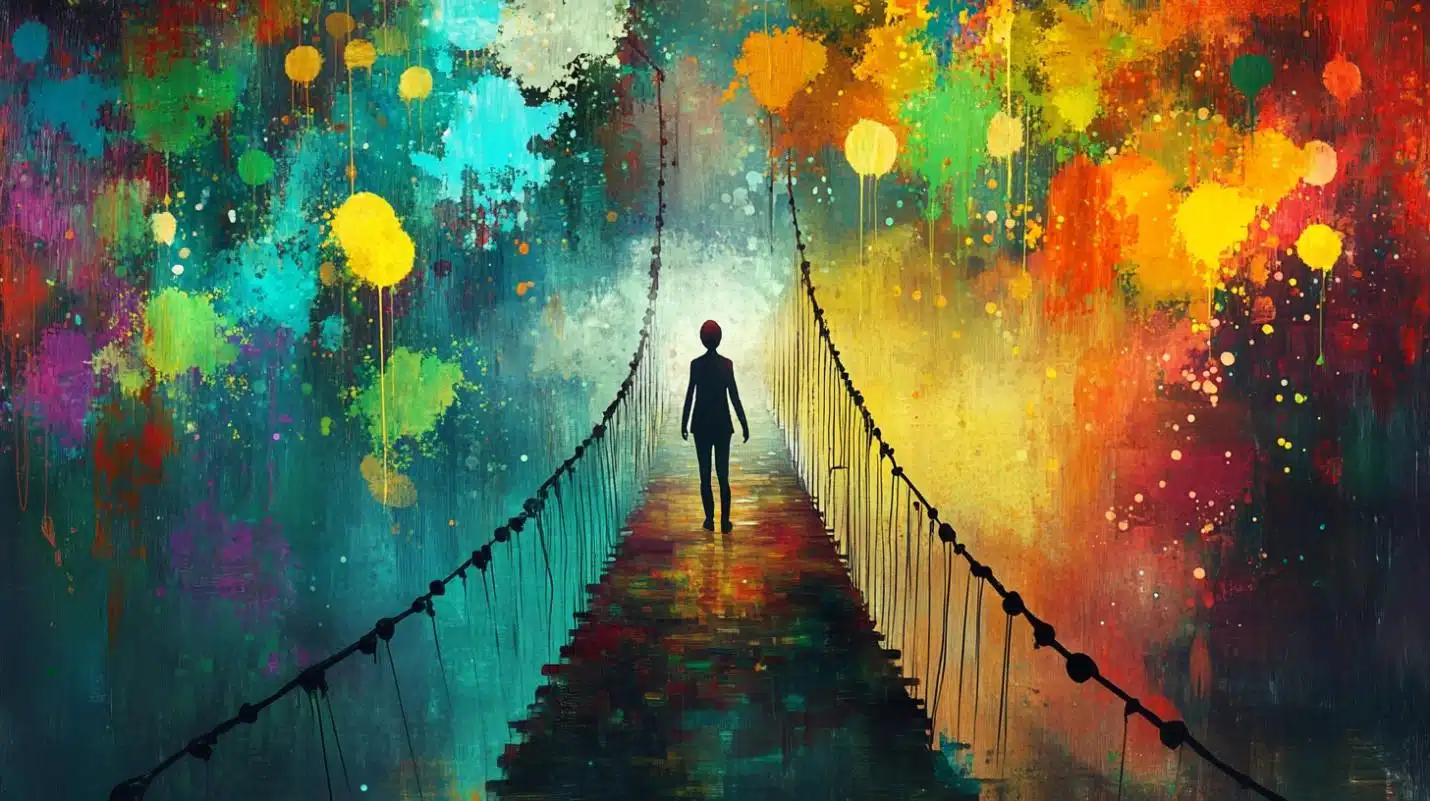The AI-powered marketer’s roadmap to the future of content
Key trends, lessons and strategies to help you navigate the exciting future of AI-powered content creation and stay ahead of the curve.
We’ve come to the end of my series, “Decoding generative AI: A marketer’s guide to text-based and visual AI content.”
Because this series focused on generative AI and content, I asked AI assistant Claude Sonnet to help co-create this article with me. I instructed it to use my voice and supplied all the previous posts in this series for reference. Below is the edited output, adding a few of my own touches. It did a nice job, but I guess that is the entire point.
Embracing AI in marketing: Trends, tools and tactics for success
Over the past few months, we’ve delved deep into the world of AI-powered content creation, exploring everything from text generators to visual content tools. As we wrap up this series, I can’t help but feel a mix of excitement and, yes, a touch of that familiar AI anxiety.
- Where is all this heading?
- What will we all be doing two, five or 10 years from now?
- Will my expertise and value survive in an unpredictable AI future?
While nobody can predict the future, one thing is certain: the future of marketing (and the world) is AI-powered. Full stop.
We have the power to learn new skills, advocate for the ethical use of AI and wisely lead our profession into the AI era. AI brings the knowledge and we bring the wisdom.
Let’s take a moment to reflect on our journey throughout this series and look ahead to the exciting (and sometimes nerve-wracking) future that awaits us.
Dig deeper: AI content creation: Ushering in the unimaginable

7 emerging trends to watch
If there’s one thing I’ve learned in my years of covering marketing technology, it’s that the only constant is change. And boy, is the AI landscape changing fast. Here are a few trends that have me on the edge of my seat.
1. Multimodal AI
Remember when we talked about text-based and visual AI as separate entities? Those lines are blurring faster than we can say “ChatGPT.” We’re seeing tools that can understand and generate text, images and even video in a seamless, integrated way. This convergence is going to open entirely new possibilities for creative campaigns.
2. AI agents and advanced chatbots
This is where things get really exciting (and a little sci-fi). We’re moving beyond simple chatbots to AI agents that can perform complex tasks, make decisions and even collaborate with other AI agents.
Imagine having a virtual marketing assistant that can analyze trends, generate content ideas and even negotiate with influencers — all while you’re sipping your morning coffee. These AI agents are set to revolutionize how we approach customer service, lead generation and even strategic planning.
3. Hyper-personalization at scale
With AI’s ability to analyze vast amounts of data and generate tailored content, we’re entering an era where every customer interaction can be uniquely personalized. Think of crafting thousands of variations of an email campaign, each perfectly tuned to its recipient’s preferences and behavior.
4. AI-powered strategy and ideation
We’ve talked a lot about using AI for content creation, but the real game-changer might be how it helps us develop strategies and generate ideas. AI customer companions are just the beginning — soon, we might be brainstorming entire campaigns with our AI collaborators.
5. Ethical AI and transparency
As AI becomes more prevalent in our work, there’s a growing demand for transparency and ethical guidelines. Expect to see more tools and frameworks designed to ensure AI-generated content is fair, unbiased and clearly labeled as such.
6. AI-native content formats
We’re already seeing new content formats emerge that are uniquely suited to AI creation, like infinitely scrolling stories or dynamically generated infographics. Keep an eye out for entirely new ways of engaging audiences that are only possible with AI.
7. Conversational marketing revolution
Building on the AI agent trend, we’re seeing a shift toward more natural, conversational interactions between brands and consumers. Advanced chatbots and AI-powered conversational interfaces are becoming sophisticated enough to handle complex queries, provide personalized recommendations and even close sales. This trend blurs the lines between marketing, sales and customer service, creating a more holistic and seamless customer experience.
These trends are already starting to reshape our industry at lightning speed. The key is to stay curious, keep experimenting and always be ready to adapt. The marketing landscape of tomorrow will look very different from today — and that’s what makes our field so exciting and stressful at the same time.
Dig deeper: AI transformation: How to prepare your marketing team
Decoding generative AI series summary: a look back
Let’s take a quick stroll down memory lane and recap the key articles in this series:
- The rise of generative AI: We kicked things off by exploring the basics of generative AI and its potential to revolutionize marketing.
- Working with text generators: We dove into AI-powered writing, learning how to craft compelling copy with tools like ChatGPT.
- The new frontier of visual content: We explored the exciting realm of AI-generated images and videos, discovering how to create stunning visuals without traditional design skills.
- Building a basic AI strategy: We learned how to develop a foundational AI strategy for our marketing organizations.
- Generative AI tools and platforms: We navigated the complex landscape of AI tools, focusing on how to choose the right solutions for our needs.
- AI for both text and visuals: We explored the powerful combination of using text-based and image-based generative AI side-by-side.
- Building your generative AI marketing skillset: We discussed the importance of continuous learning and upskilling in the age of AI.
- Measuring success: KPIs for generative AI in marketing: We tackled the crucial task of measuring the impact and ROI of our AI initiatives.
Key takeaways: Lessons from the jagged AI frontier
As I wrap up this series and start to ideate on what comes next, a few key lessons stand out.
AI is a tool, not a replacement
Throughout our journey, we’ve seen AI as an incredibly powerful assistant, but it’s not here to replace human creativity and strategy. The magic happens when we collaborate with AI, combining its computational power with our human insight and empathy.
Experimentation is key
The AI landscape is evolving rapidly and the only way to keep up is to roll up our sleeves and experiment. Don’t be afraid to try new tools and approaches — that’s how we learn and grow.
Ethics and transparency matter
As we harness the power of AI, we must also be mindful of its ethical implications. It is crucial to be transparent about AI usage and ensure fairness in our AI-powered campaigns.
Continuous learning is non-negotiable
The AI revolution isn’t slowing down, and neither can we. To stay ahead of the curve, commit to ongoing education and skill development.
Start small, think big
We’ve seen how to build a basic AI strategy and measure its impact. Remember, it’s OK to start with small pilot projects, but always keep an eye on the bigger picture and how AI can transform your entire marketing approach.

Planning for the future: Your AI roadmap
Where do we go from here? Here’s a roadmap to help you navigate the AI-powered future of marketing.
- Assess your current state: Take stock of your existing AI capabilities and identify areas where AI could impact your marketing efforts most.
- Set clear goals: Define what you want to achieve with AI in both the short and long term. Are you looking to improve efficiency, boost creativity or enhance personalization?
- Build your AI toolkit: Based on your goals, start assembling your AI toolkit. Remember, it’s not about having every tool out there but about choosing the right tools for your specific needs.
- Upskill your team: Invest in training and development to ensure your team is comfortable working with AI tools. Consider creating AI champions within your organization to lead the charge.
- Start small and iterate: Begin with pilot projects to prove the value of AI in your marketing efforts. Use the KPIs we discussed to measure success and refine your approach.
- Stay informed: Keep up with the latest AI trends and developments. Join communities, attend webinars and engage with thought leaders in the space.
- Collaborate and share: Don’t go it alone! Share your experiences with peers, learn from others and contribute to the growing body of knowledge around AI in marketing.
Dig deeper: 6 ways to use generative AI for your marketing

A call to action: Embrace the AI revolution
Marketing and communications are undergoing a “once in a lifetime” transformation. You thought social media and the digital era brought on big changes — that’s nothing compared to what AI has in store for us.
The AI revolution is here, and it’s up to us to shape how it transforms marketing and the world around us. To advocate wisely while protecting ourselves and our audiences, we must fully understand the tools and capabilities of AI. I challenge each of you to take what you’ve learned in this series and put it into action:
- Experiment with at least one new AI LLM this week. I’m loving Perplexity and Claude Sonnet!
- Share your AI experiences — both successes and failures — with your team or professional network.
- Commit to ongoing learning about AI in marketing.
Remember, the future of marketing is being written right now and we have the incredible opportunity to be its authors. Let’s embrace the AI revolution and use it to create more engaging, more effective and more human marketing experiences. Here’s to the exciting journey ahead — I can’t wait to see what amazing things you’ll create with AI by your side!
Contributing authors are invited to create content for MarTech and are chosen for their expertise and contribution to the martech community. Our contributors work under the oversight of the editorial staff and contributions are checked for quality and relevance to our readers. MarTech is owned by Semrush. Contributor was not asked to make any direct or indirect mentions of Semrush. The opinions they express are their own.
Related stories